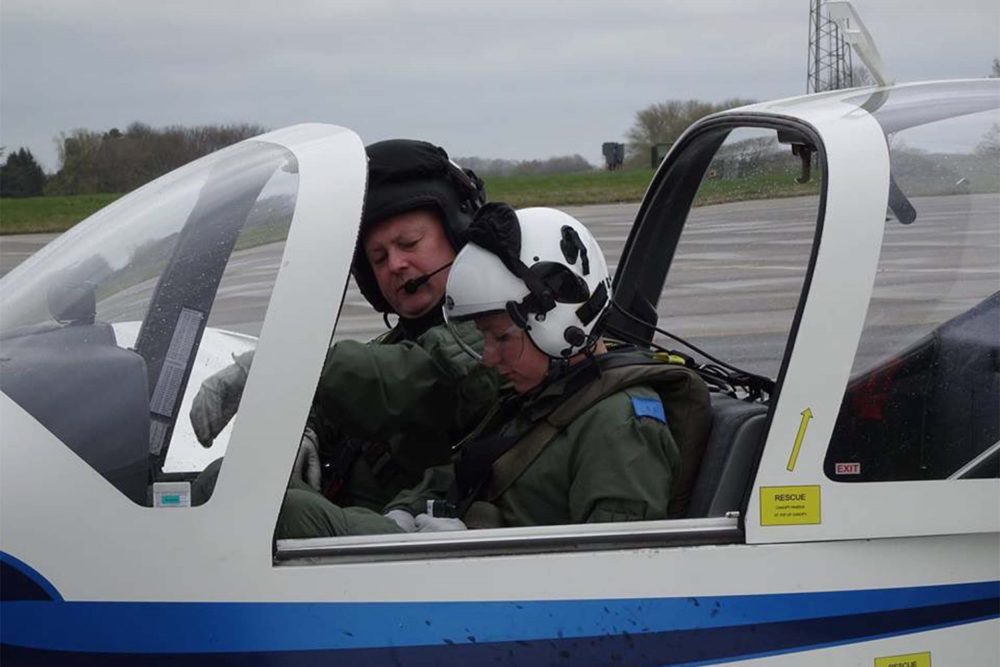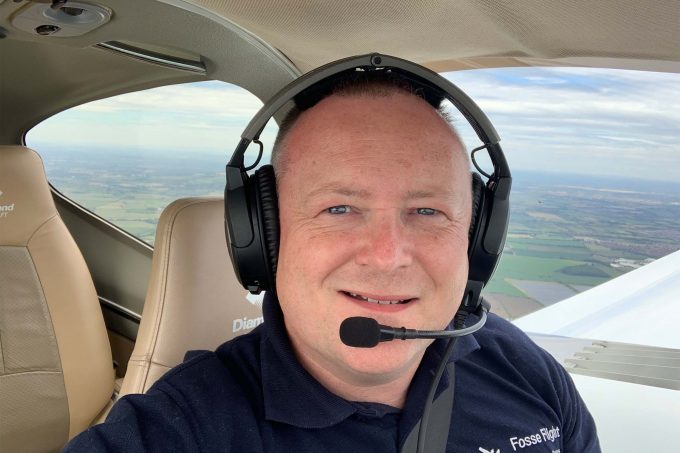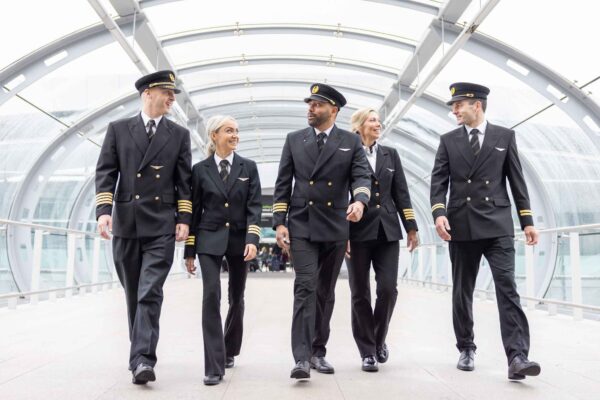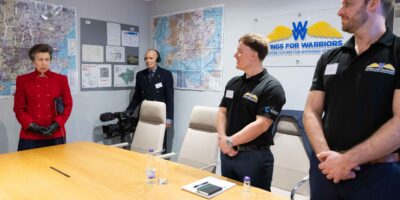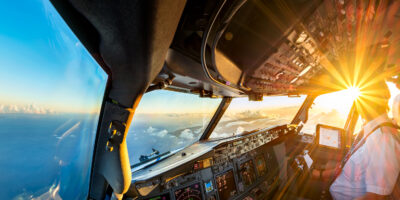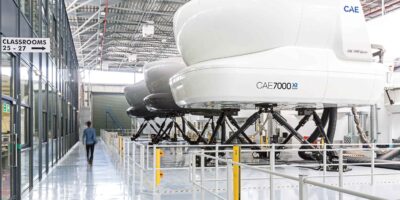How did you get into flying?
I’ve always been interested in civil aviation. As a child, I’d visit airports to watch aircraft. When I was a teenager, I joined the local Air Cadets where I got the chance to fly in Chipmunks, and at 17 I received an RAF flying scholarship.
Tell us about your job?
I’m Head of Training for RAF Sport Aircraft. My main base is RAF Brize Norton, but I cover a wide area, promoting best practice standards across all RAF flying clubs. As an RAF Tutor Pilot 6 AEF, I fly Air Cadets in the Grob Tutor. For some it’s the first time in an aircraft – introducing these youngsters to aviation is a real honour.
I’m also a civil flight instructor/examiner in Oxfordshire and Gloucestershire.
“Flight examining lets me help other pilots to achieve their dreams”
Nowadays, military and civil aviation are very aligned. The main difference when instructing is that in the military we wear a full flying suit with helmet, gloves and parachute, and in civil aviation it’s more likely to be jeans and a polo shirt. Although I still instruct, most of my time is spent examining. One of the joys of examining is that you get to experience many different aircraft. I’ve flown almost 40 types.
An instructor’s most important quality is empathy. You have to be able to put yourself in the mind of your student and see things through their eyes. Never assume anything, whether it’s aviation-related or not. I once told a Spanish student we’d have to correct for the wind on an ILS approach, using English colloquialisms like ‘…take a punt at this’. Luckily, when walking to the aircraft he admitted to not understanding me. For me, this was a very important lesson.
What I love about my job is that it allows me to interact with a wide range of people. The social side is fascinating as all students are different. Often, they’re nervous, so you put them at ease in order to get the best out of them. Some candidates fail, but the vast majority are ready for the test and it’s up to me to give them the opportunity to display their skills. Flight examining lets me help other pilots to achieve their dreams and ambitions, which is a big privilege.
What training did you have?
In 1998, I became an RAF engineering officer and staff pilot, and since 2016 I’ve been flying the Grob Tutor. I’m one of the few engineering officers who also have RAF Reserve pilot wings. Alongside my RAF work and family life, I’ve gradually built up my civilian qualifications. I’m a big fan of the modular commercial training route as it allows you to add ratings as and when time and money allow.
What’s been your favourite flight?
Swapping the VC10 that was stationed on the Falkland Islands. We flew the new aircraft there with refuelling stops at the Canary Islands and Ascension Island. The other VC10 came from the Falklands and met us for air-to-air refuelling. Ascension Island – suddenly seeing this volcanic island appear in the middle of nowhere after the long flight over the ocean and seeing turtles nesting on the beach during our time there.
And your favourite airfield?
Gloucestershire Airport, as it’s where I’ve done some important parts of my training. Apart from this personal connection, I also like that it has many student pilots, a brilliant museum, and a great ATC team. Gloucestershire is a vibrant place that shows how GA is thriving in the UK.
Do you get to fly much outside of work?
Not much, but I occasionally take my wife and children up for a scenic flight. Two years ago, we flew a Diamond DA42 around the Isle of Wight, which was very enjoyable.
What’s your most valuable career advice?
Make the most of the people you know. While aviation is a big industry, it’s also a small one. Everyone knows each other, which makes networking important. Luckily, the aviation community is a positive one with pilots always happy to help each other out.


